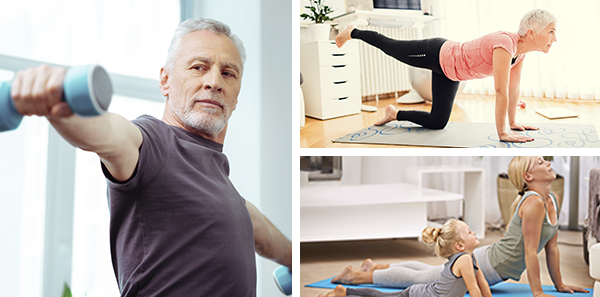
Cycling helps us to be in good physical shape, with consequent health benefits, with the added advantage that, being a non-impact physical activity, it causes far less muscle, bone and joint pains.
Cycling, done rationally, has a clear beneficial effect in the main risk factors for cardiovascular diseases. There is ample evidence that low cardiovascular fitness is an important risk factor for al causes of mortality in men and women.
Cycling, like other aerobic exercises, improves glucose regulation (extremely importante for diabetics), lower blood pressure figures and reduces abdominal obesity.
Aging is associated with a preferential accumulation of fat in the abdominal region, especially in men. Today we know that abdominal obesity (waist circumference) increases the risk of cardiovascular disease, independent of other risk factors. Any prolonged exercise, such as cycling, can reduce total stored body fat.
Another very important aspect of health is the so-called musculoskeletal health, because it is closely related to the quality of life of adults. The two most important components of this health would be osteoporosis and loss of muscle mass and strenght.
Loss of streght and muscle mass increases with age. This decrease is associated with an increased risk of falls, low bone mineral density and hip fractures. In addition, decreasing muscle strength is an important factor for the adult to remain active.
Low bone mineral density decreases markedly after two years of menopause due to hormonal causes such as the decrease in estrogen. Aerobic exercise, as is the case of cycling, beneficially affects correct bone mineralization, both due to the exercise itself, and the beneficial effect of sunlight and the intake of vitamin D.
Stregth and muscle mass is lost with age. Clearly, any exercise that maintains or increases muscle mass and muscle strength will be beneficial to health.
Since cycling increases leg stregth, if it is accompanied by abdominal and arm muscle exercise, it will improve musculoskeletal health.
D. Juan Antonio Andreo Lillo – Qualified in Phisical Activity & Sports
The information published in this media neither substitutes nor complements in any way the direct supervision of a doctor, his diagnosis or the treatment that he may prescribe. It should also not be used for self-diagnosis.
The exclusive responsibility for the use of this service lies with the reader.
ASSSA advises you to always consult your doctor about any issue concerning your health.












